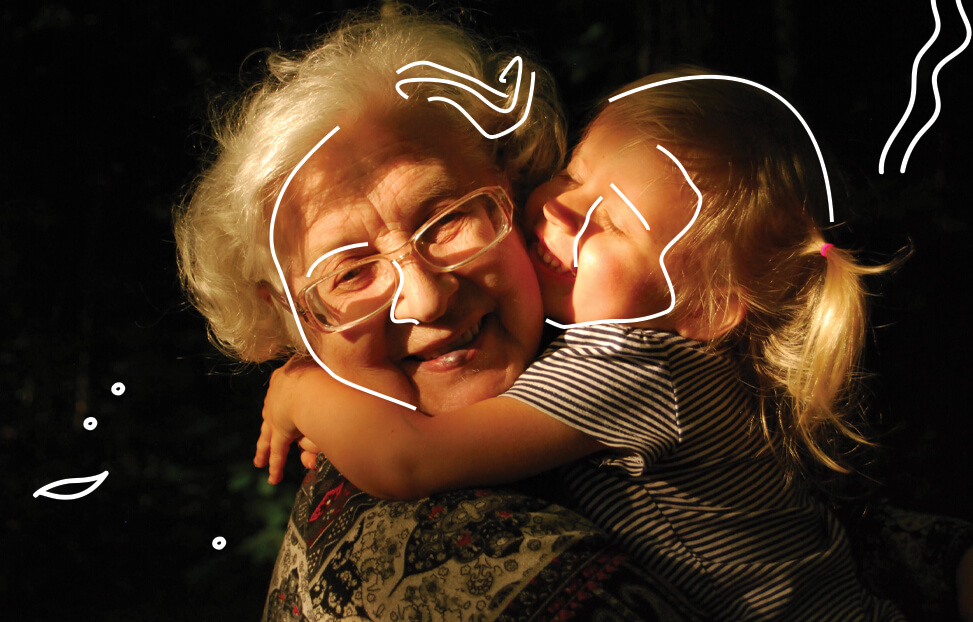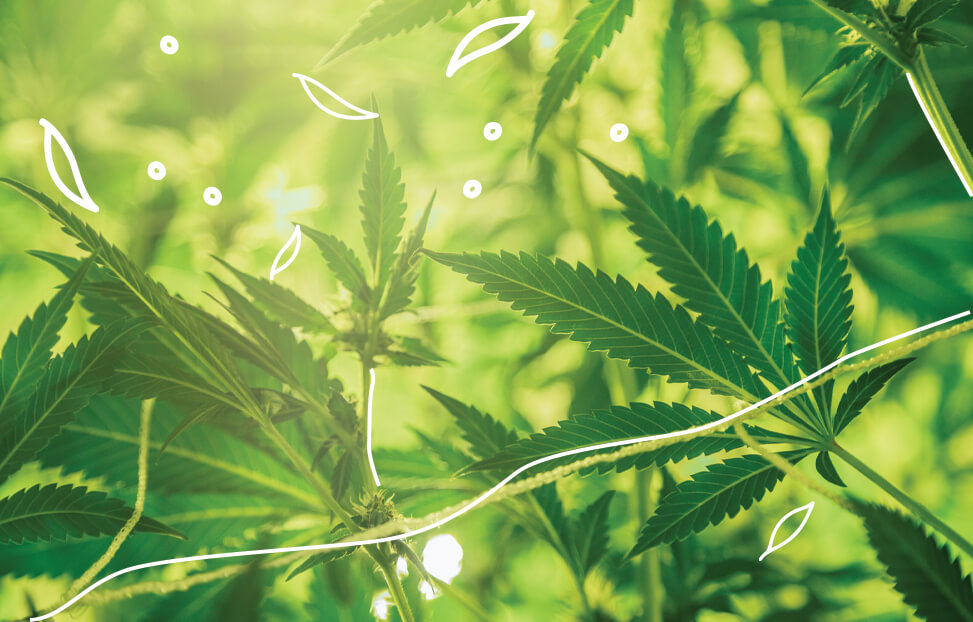Your body has more cannabinoid receptors than any other type of receptors. As of now, there are 2 main cannabinoid receptors; CB1 and CB2 receptors. CB2 receptors are the receptors which are responsible for targeting inflammation and allow for the synchronization of the different systems of the body. CB2 receptors are found throughout the body’s organs (including the brain) and the immune system’s white blood cells. Additionally, research as illustrated that these receptors are found in the microglia of the brain. The microglia account for 15-20% of all the cells in the brain and they are the cells which mediate immune responses in the central nervous system by cleaning cellular debris and dead neurons from the nervous tissues. They are known to regulate brain development, maintain neural networks, and repair brain injuries. This is a huge part of neuroimmune function. Controlling inflammation is a key function of the immune system and this is what cannabinoids specialize in.
Words such as homeostasis and balance are so frequently used in conjunction with CBD when describing the role cannabinoids can play in maintaining physiological health. Due to the amount of stress in the modern day, and for those who have chronic inflammatory conditions -cannabinoids are vital in making sure inflammation of the body and mind does not get out of control. You see stress and inflammation are not only due to bruises and injuries; the HPA axis pathways (our stress response system) is partially controlled by the endocannabinoid system and it is the CB2 receptors which calm down our minds in mentally stressful situations. Many scientists suspect that this is why it is being demonstrated over and over again that many of us are depleted of endocannabinoids (an endocannabinoid is a cannabinoid created endogenously by the body), which makes us less able to physiologically handle stress, which depletes us more. This creates a negative loop. Chronic inflammation is responsible for most diseases of the brain and body – so it is not something to take lightly. Luckily, the phytocannabinoids (phytocannabinoids are cannabinoids created by plants) derived from hemp, such as CBD, are able to activate CB2 receptors, as well as replenish 2-AG, the endocannabinoid which our body endogenously produces to activate the CB2 receptors. Replenishing the 2-AG is as vital as the well-being and pain relief provided by CBD. It is also why the needed dosage of CBD goes down over time. As the endocannabinoid system is supported and resupplied by the CBD, the endocannabinoids become able to handle inflammation itself, without the help of the phytocannabinoids provided by hemp.

Photo by Tim Foster on Unsplash
When you think of CB2 receptors, CBD, or 2-AG think of calming stress of all kinds. Chronic stress, besides creating disease and disorder, takes a huge toll on our affect (mood) and sensory (sensation-based) neurons. This is because the mind and the body are connected – therefore, whether it is mind or body, when one system is thrown off balance there is a chain reaction and many other systems of the body get thrown off as well.
Cannabinoids play a critical role in neural function, including neural development, neuroimmune function, neurogenesis, stress maintenance, mood regulation, and much, much more. There are 2 types of endocannabinoids that the current literature focuses on: 1. AEA works mainly with the CB1 receptors and is what the phytocannabinoid THC is more akin to. 2. The endocannabinoid previously mentioned, 2-AG, which works mainly with the CB2 receptors and is what the phytocannabinoid CBD is more akin to. Researchers keep indicating that throughout the lifespan, especially in young and developing brains, the levels of 2-AG are much higher than those of AEA. This lines up perfectly with indications into genetic testing, consistently discovering that individuals of all walks of life actually need more CBD than THC, from the tests I’ve seen about 1:40 THC: CBD. This makes sense as it is the CB2 receptors that regulate inflammation; a primary root of health. Today, we are going over the many, many ways CBD improves brain health and function. But don’t forget CBD is a huge part of regulating stress below the neck as well – and a big part of that would be gut function, which we know is the second brain and is intimately tied to brain function. The endocannabinoid system is very tied to vomiting and visceral sensations, this is due to the homeostatic role that the ECS plays in our gut and intestinal inflammation. Read more about CBD and the gut microbiome here.
Neurogenesis
Let’s start from the beginning – genesis! Endocannabinoids are vital to the development, they are at their highest concentration in the female body during ovulation, they are important for the implantation of the fertilized egg on the uterine wall, they are found in the fetus at varied levels throughout pregnancy, they are found in breast milk, infants without endocannabinoids suffer from a failure to thrive, they are vital to neurodevelopmental continuously to adulthood, and are part of neurogenesis throughout the course of life!

Photo by lucas mendes on Unsplash
A study published in the British Journal of Pharmacology found,
“A body of data indicates that cannabinoid ligands control cell genesis in the adult brain, regulating cell proliferation and overall neurogenesis in the mammalian brain (Kochman et al., 2006; Mackowiak et al., 2007). Furthermore, neural progenitor cells (NPCs) express a functional endocannabinoid system…Endocannabinoids may play pivotal roles in at least some of these phases of neurogenesis…The functional importance of neurogenesis has yet to be clarified; however, the weight of evidence indicates that impaired neurogenesis is associated with depression and cognitive impairment. Pharmacological targeting of the cannabinoid system as a regulator of neurogenesis may prove a fruitful strategy in the prevention or treatment of mood or memory disorders.”
-Prenderville, Jack A, et al. “The Role of Cannabinoids in Adult
Neurogenesis.” British Journal of Pharmacology, vol. 172, no. 16, 2015,
pp. 3950–3963., https://doi.org/10.1111/bph.13186.
Cannabinoids and Mental Stress
Cannabinoids are responsible for calming down elevated levels of mental stress, or the hormone cortisol, in fight or flight situations. Our HPA axis pathway is the main hormone regulatory system of the body, it’s responsible for the flight or fight response system, it’s a huge part of immune function and it is under partial control of the endocannabinoid system. It is also involved in the development of a wide range of disorders; meaning disorders from depression to irritable bowel syndrome, alcoholism, and even Alzheimers. Next week we will dive further into specific neurological diseases.
The endocannabinoid system suppresses HPA pathway activity, via neurotransmitters in the prefrontal cortex, amygdala, hypothalamus, and hippocampus. Additionally, CBD activates many more receptors and pathways than just those of the endocannabinoid system. This incredible gift of mother nature promotes the production of GABA, serotonin, and balance in neurological function. Benzos, the class pharmaceutical anxiety medications, are actually GABAergic neurotransmitters themselves! Serotonin is the ultimate feel-good chemical in the brain. Downregulation of serotonin is implicated in depression, anxiety, migraines, and much more. Additionally, hemp itself has over 500 active compounds, including various fatty acids (fats make the brain run), carotene, phosphorus, potassium, magnesium, sulfur, calcium, iron, and zinc, vitamins E, C, B1, B2, B3, B6, many antioxidants, and more! Finally, by synchronizing with the other transmitters throughout the body and by creating synchronization between the different systems of the body, through the support of hemp and CBD, the body begins to maintain more balanced physiology, which helps stress of all kinds before it begins. The best treatment truly is prevention! It is my sincere belief that in the next 100 years, taking CBD will be like brushing your teeth for maintaining health.
The brain is severely impacted by inflammation, yet we don’t usually think about brain inflammation as we cannot see it in the way we see a bruise. We don’t experience the debilitating effects in the immediate reality the way we experience inflammation of the ankle, such as with a twist, where we become unable to walk. Yet, chronic inflammation of the brain is very serious. Chronic brain inflammation is responsible for depression, neurodegeneration, neurological disorders, and even death. Luckily, just as the body uses cannabinoids to calm inflammation of the knees/joints/back/etc. There are a plethora of cannabinoid receptors in the brain maintaining our neurological functioning by keeping mental stress under control.
Cytokines play vital roles in neuroinflammation and degeneration. By multiple mechanisms, there is a reciprocal regulation of the cytokines levels and the endocannabinoid system. CBD doesn’t only work via the cannabinoid receptors, there are a plethora of pathways and receptors hemp activates. To provide one of many examples, phytocannabinoids are able to reduce inflammation of the brain by reducing the amyloid-beta-induced, or abeta, neuroinflammation. Cannabinoids do this by inhibiting GFAP mRNA and protein expression in Abeta. The abeta target is extremely interesting, as reducing a build-up of abeta is a big part of retaining memory and preventing alzhiemers and other abeta-evoked neuroinflammatory responses. GFAP mRNA is seriously upregulated after strokes and in those with alexander disease, alzheimers, and dementia. GFAP is not yet well understood but it is a major component of the intermediate filaments in mature astrocytes, they control the inflammatory processes in the neurons of the brain and play a huge role in the development of neurological diseases. This is why they are a target for many inflammatory diseases of the brain.
Finally, targeting key places of inflammation and creating non-inflammatory pathways creates a butterfly effect, affecting other pathways and actions in the body as well. You heal one area of the body, and others are improved as well. The body is a whole-connected system.

Photo by Ekaterina Shakharova on Unsplash
Future Research
There are many, many other pathways in the body that CBD is able to regulate and balance, too many to go into now. This is why researchers want to rename “The Endocannabinoid System” to “The Endocannabinoidome.” Ome as in all-encompassing. The endocannabinoid system was only discovered in the 90s, and research was seriously impeded by the illegal status hemp held. Luckily, through national legalization, more and more research is illustrating what a large role this system plays in maintaining health. In fact, it seems that it may be the largest and most primal system of the body itself. Yet, most people have no idea it even exists, and it is only just beginning to be taught in medical school. But, it is beginning to be taught at the most prominent medical schools throughout the world! Hemp is the future, and we are so happy to be a part of the movement in looking at health through a holistic and preventative lens. Holistic – as connecting all the systems of the body to one another, not seeing the body as parts separate from the others, but as a connected whole. Preventative – as creating physiological balance to prevent the disease from manifesting in the first place. It is much easier to treat a disease before it has manifested than to cure a manifest illness! The only issue is that CBD is not yet regulated, and most CBD on the market consists of isolates (Isolates are just CBD, with the other parts of the plant burned off) but it is not just the CBD that affects the pathways of the body, it’s all of those other 500 chemical compounds in hemp and the other 140 phytocannabinoids such as CBG, CBN, CBDV, etc. Most products are not quality tested or produced (Hemp is a bioaccumulator, meaning it cleans the soil it is grown in. Therefore, if there are any toxins in the soil these will be concentrated into the flower, and that is seriously dangerous for the consumer.) This is why I must say it is so important to get your CBD from a place like Botanicam. We have a strict 12 point checklist that ensures all the CBD product manufacturers and the products we represent are quality tested and produced. Our founders went through 1,200+ manufacturers, and we only represent 12!! Finally, we even randomly test our own products to make sure the lab tests are accurate. I think we may be the only company in the country that does this high level of scrutiny. Botanicam was started out of a love for this plant. We want people to heal, but in order to do that they need quality hemp products. We hope that you love this plant and what we do as well.
To hemp!!

Photo by Joel Muniz on Unsplash

An Article By Evie Louise
Evie Louise is a recent psychology graduate from New York University. She is a certified in International Cannabinoid Clinical Therapy. Evie sees all forms of the cannabis sativa plant as the future of psychiatry, and hopes to use it in her therapy practice as a full spectrum approach to mental health and wellness.
